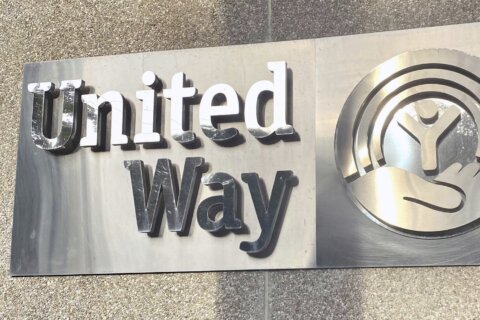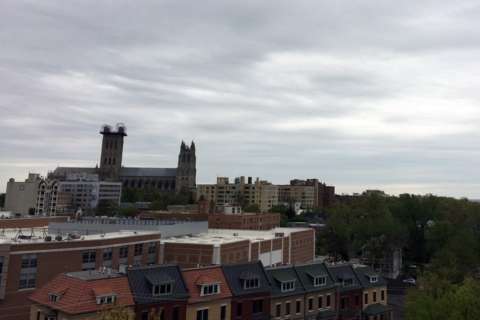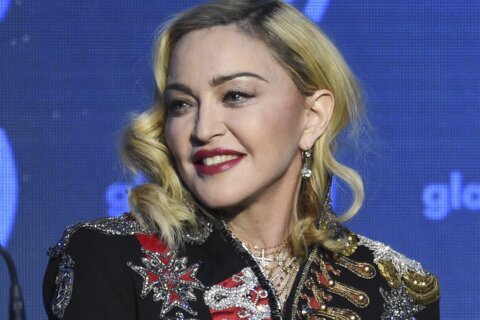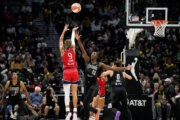Sports amid the pandemic became a whole different sort of spectacle, especially when it came to spectators — often with zero, sometimes with some and, in at least one instance at a Grand Slam tennis tournament, starting a match with fans in the seats yet finishing it with none present.
Screams and chants, applause and dancing, cheering and jeering by tens of thousands in the stands were so customary and unremarkable at the various athletic endeavors in the Before Times that they tended to recede into the background as not much more than white noise.
Over the past year, though, thanks to the contagiousness and dangers of the coronavirus, such sights and sounds were replaced at cavernous venues by the echoes of a bouncing ball or the squeaks of sneakers or “Did he really say that?” chatter among players, coaches and officials that suddenly was audible.
And, truly, the entire essence of sports as we know them changed in subtle, if fundamental, ways during the past 12 months because of restrictions on crowds. For those who were no longer able to enjoy being right there, of course — how many kids missed out on a chance to witness a game firsthand for the first time? — but also for those viewing from afar and even for the participants themselves.
If a contest happens without anyone delighting in the athleticism or praising and booing the athletes and the outcomes, does the whole undertaking matter as much? Decreased television ratings across the landscape, even for a juggernaut such as the Super Bowl, seemed to indicate not.
“It was very weird at first, when the season started, and like everything else, you kind of got used to it. Which is not a good thing,” said Will Harris, a relief pitcher for the Washington Nationals, who like all teams in Major League Baseball, played every regular-season game of a shortened 2020 season with zero spectators (the postseason “bubbles” allowed limited crowds).
“To be honest, it’ll probably be a little weird when the fans are back in the stands, because a lot of us have kind of gotten used to it being the way that it was last year,” Harris said. “The adrenaline might be a little higher than normal when we do see (them). I’m looking forward to it.”
Athletes in individual sports, so accustomed to being fueled by on-site energy and support, needed to adapt and rely on their inner voices.
TV viewers couldn’t always tell the difference between what was real and what was artifice. Broadcasters tried to keep viewers engaged and, ultimately, hoped to accomplish what so many of us endeavored to do in so many ways ever since the NBA began the process of halting sports on March 11, 2020: pretend all was normal.
Telecasts featured cardboard cutouts or video images of fans. Fake sounds simulated clapping or yelling.
Sometimes it worked. Sometimes it didn’t.
Harris’ Nationals are still awaiting word from the city government on whether they’ll be able to open their gates April 1, MLB’s opening day. Nearly every other baseball team already has the go-ahead to allow some fans.
That’s part of a trend as vaccine distribution increases and COVID-19 cases and fatalities decrease.
Many, although not all, arenas are letting smaller-than-usual audiences return for NBA or NHL games. The NFL season culminated with about 22,000 people — roughly a third of stadium capacity — at last month’s Super Bowl in Florida.
Two weeks ago, when New York City’s Madison Square Garden first allowed folks back for Knicks games, Golden State Warriors star Stephen Curry got an immediate reminder of how different the sights and sounds are, even with attendance capped at about 2,000.
“There were some fans heckling, which was awesome,” Curry said. “And me and (teammate) Draymond (Green) were talking about it. There’s no better feeling, I don’t care if it’s 19,000 or 2,500 or whatever it is: You love silencing a road crowd.”
Washington Wizards coach Scott Brooks said it’s hard to even notice when there are such sparse gatherings.
“But it’s better than no fans. It’s baby steps,” he said. “Hopefully we can get everything under control, and we can move forward as a league, as a country, and get back to being somewhat normal.”
All in all, it’s been a time of uneasiness, uncertainty and — as with other aspects of our day-to-day lives for the past 12 months — the utter unknown.
Never was that better illustrated than at the Australian Open, the first Grand Slam tennis tournament in a year to let in more than 1,000 spectators daily.
A COVID-19 outbreak in Melbourne — well, what amounted to an “outbreak” in Australia, about a dozen cases — led to a five-day lockdown that began in Week 1 of the two-week event; competition continued, but spectators were barred.
Because the ban took effect at midnight, and No. 1 Novak Djokovic happened to be playing a match right then, his contest was halted for 10 minutes in the fourth set while ushers cleared disappointed and booing fans out of Rod Laver Arena.
So, no one was there to see, celebrate or congratulate when Djokovic wrapped up his victory about an hour later.
___
More AP coverage of the pandemic’s first year: Pandemic: One Year
Copyright © 2024 The Associated Press. All rights reserved. This material may not be published, broadcast, written or redistributed.







